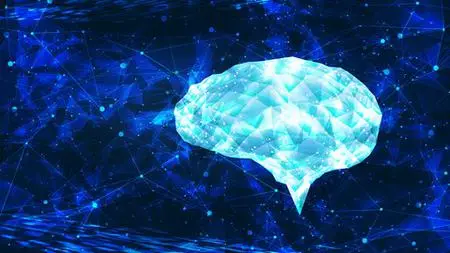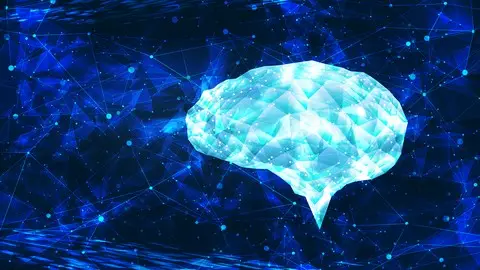Deep Learning With Apache Spark - Masterclass!
Last updated 5/2019
MP4 | Video: h264, 1280x720 | Audio: AAC, 44.1 KHz
Language: English | Size: 2.92 GB | Duration: 5h 33m
Last updated 5/2019
MP4 | Video: h264, 1280x720 | Audio: AAC, 44.1 KHz
Language: English | Size: 2.92 GB | Duration: 5h 33m
A fast-paced guide to implementing practical hands-on examples, streamlining Deep Learning with Apache Spark
What you'll learn
Explore deep learning neural networks such as RBM, RNN, and DBN using some of the most popular industrial deep learning frameworks.
Learn how to leverage big data to solve real-world problems using deep learning.
Understand how to formulate real-world prediction problems as machine learning tasks, how to choose the right neural net architecture for a problem, and how to train neural nets using DL4J.
Configure a Convolutional Neural Network (CNN) to extract value from images.
Create a deep network with multiple layers to perform computer vision.
Classify speech and audio data.
Get up-and-running and gain an insight into the deep learning library DL4J and its practical uses.
Train and test neural networks to fit your data model.
Requirements
Basic knowledge of Machine Learning and Big Data concepts is assumed.
Description
Deep learning has solved tons of interesting real-world problems in recent years. Apache Spark has emerged as the most important and promising Machine Learning tool and currently a stronger challenger of the Hadoop ecosystem. In this course, you’ll learn about the major branches of AI and get familiar with several core models of Deep Learning in its natural way. This comprehensive 3-in-1 course is a fast-paced guide to implementing practical hands-on examples, streamlining Deep Learning with Apache Spark. You’ll begin by exploring Deep Learning Neural Networks using some of the most popular industrial Deep Learning frameworks. You’ll apply built-in Machine Learning libraries within Spark, also explore libraries that are compatible with TensorFlow and Keras. Next, you’ll create a deep network with multiple layers to perform computer vision and improve cybersecurity with Deep Reinforcement Learning. Finally, you’ll use a generative adversarial network for training and create highly distributed algorithms using Spark.By the end of this course, you'll develop fast, efficient distributed Deep Learning models with Apache Spark.Contents and OverviewThis training program includes 3 complete courses, carefully chosen to give you the most comprehensive training possible.The first course, Deep Learning with Apache Spark, covers deploying efficient deep learning models with Apache Spark. The tutorial begins by explaining the fundamentals of Apache Spark and deep learning. You will set up a Spark environment to perform deep learning and learn about the different types of neural net and the principles of distributed modeling (model- and data-parallelism, and more). You will then implement deep learning models (such as CNN, RNN, LTSMs) on Spark, acquire hands-on experience of what it takes, and get a general feeling for the complexity we are dealing with. You will also see how you can use libraries such as Deeplearning4j to perform deep learning on a distributed CPU and GPU setup. By the end of this course, you'll have gained experience by implementing models for applications such as object recognition, text analysis, and voice recognition. You will even have designed human expert games.The second course, Apache Spark Deep Learning Recipes, covers over 35 recipes that streamline eep learning with Apache Spark. This video course starts offs by explaining the process of developing a neural network from scratch using deep learning libraries such as Tensorflow or Keras. It focuses on the pain points of convolution neural networks. We’ll predict fire department calls with Spark ML and Apple stock market cost with LSTM. We’ll walk you through the steps to classify chatbot conversation data for escalation. By the end of the video course, you'll have all the basic knowledge about apache spark.The third course, Mastering Deep Learning using Apache Spark, covers designing Deep Learning models to edge industrial-grade apps. You’ll begin with building deep learning networks to deal with speech data and explore tricks to solve NLP problems and classify video frames using RNN and LSTMs. You’ll also learn to implement the anomaly detection model that leverages reinforcement learning techniques to improve cybersecurity. Moving on, you’ll explore some more advanced topics by performing prediction classification on image data using the GAN encoder and decoder. Then you’ll configure Spark to use multiple workers and CPUs to distribute your Neural Network training. Finally, you’ll track progress, solve the most common problems in your neural network, and debug your models that run within the distributed Spark engine.By the end of this course, you'll develop fast, efficient distributed Deep Learning models with Apache Spark.About the Authors● Tomasz Lelek is a Software Engineer, programming mostly in Java and Scala. He has been working with the Spark and ML APIs for the past 5 years with production experience in processing petabytes of data. He is passionate about nearly everything associated with software development and believes that we should always try to consider different solutions and approaches before solving a problem. Recently he was a speaker at conferences in Poland, Confitura and JDD (Java Developers Day), and at Krakow Scala User Group. He has also conducted a live coding session at Geecon Conference. He is a co-founder of initlearn, an e-learning platform that was built with the Java language. He has also written articles about everything related to the Java world.
Overview
Section 1: Deep Learning with Apache Spark
Lecture 1 The Course Overview
Lecture 2 Review of Key Machine Learning Terminology and Fundamentals
Lecture 3 Fundamentals of Deep Networks: Feature Engineering
Lecture 4 The Building Blocks of Deep Learning
Lecture 5 Learning Path for Deep Learning
Lecture 6 Deep Learning Use Cases
Lecture 7 Pre-requisites and Installation
Lecture 8 Up and Running with DL4J on Spark
Lecture 9 Configuration and Test Run
Lecture 10 Up and Running with TensorFlow on Spark from Yahoo
Lecture 11 Understanding the Basics of Deep Learning
Lecture 12 ND4J for NumPy-like Arrays and Operations
Lecture 13 Data.Vec for Data Preparation Pipelines
Lecture 14 DL4J for Building Neural Network Architectures
Lecture 15 Understanding the Basics of GPU
Lecture 16 Parallel Training with Multiple GPUs
Lecture 17 Designing a Basic CNN
Lecture 18 Implement a Basic CNN on DL4J in Spark
Lecture 19 Basics and Design of RNN
Lecture 20 Implement a Basic RNN on DL4J in Spark
Lecture 21 Design a Basic LSTM
Lecture 22 Implement a Basic LSTM in Spark
Section 2: Apache Spark Deep Learning Recipes
Lecture 23 The Course overview
Lecture 24 Creating a Dataframes in Pyspark
Lecture 25 Manipulating Columns in a Pyspark Dataframes
Lecture 26 Converting a PySparkdataframe to an array
Lecture 27 Visualizing an Array in a Scatterplot
Lecture 28 Setting up Weights and Biases for Input into the Neural Network
Lecture 29 Normalizing the Input Data for the Neural Network
Lecture 30 Validating Array for Optimal Neural Network Performance
Lecture 31 Setting up the Activation Function with Sigmoid
Lecture 32 Creating the Sigmoid Derivative Function
Lecture 33 Calculating the Cost Function in a Neural Network
Lecture 34 Predicting Gender based on Height and Weight
Lecture 35 Visualizing Prediction Scores
Lecture 36 Pain Point #1: Importing MNIST Images
Lecture 37 Pain Point #2: Visualizing MNIST Images
Lecture 38 Pain Point #3: Exporting MNIST Images as Files
Lecture 39 Pain Point #4: Augmenting MNIST Images
Lecture 40 Pain Point #5: Utilizing Alternate Sources for Trained Images
Lecture 41 Pain Point #6: Prioritizing High-Level Libraries for CNNs
Lecture 42 Downloading the San Francisco Fire Department Calls Dataset
Lecture 43 Identifying the Target Variable of the Logistic Regression Model
Lecture 44 Preparing Feature Variables for the Logistic Regression Model
Lecture 45 Applying the Logistic Regression Model
Lecture 46 Evaluating the Accuracy of the Logistic Regression Model
Lecture 47 Downloading and Analyzing the Therapy Bot Session Dataset
Lecture 48 Visualizing Word Counts in the Dataset
Lecture 49 Calculating Sentiment Analysis of Text
Lecture 50 Removing Stop Words from the Text
Lecture 51 Training and Evaluating TF-IDF Model Performance
Lecture 52 Comparing Model Performance to a Baseline Score
Lecture 53 Downloading Stock Market Data for Apple
Lecture 54 Exploring and Visualizing Stock Market Data for Apple
Lecture 55 Preparing Stock Data for Model Performance
Lecture 56 Building the LSTM Model
Lecture 57 Evaluating the Model
Section 3: Mastering Deep Learning using Apache Spark
Lecture 58 The Course Overview
Lecture 59 Analyzing Input Text Data That Will Need to Be Classified
Lecture 60 Configuring Word Vectors That Will Be Used in Our Network
Lecture 61 Adding Layers to Deep Neural Network
Lecture 62 Asserting Classification of Input Sentences
Lecture 63 Generating Input Video Data
Lecture 64 Creating a Neural Network for Video Classification
Lecture 65 Adding RNN and LSTMs to Network to Perform a Task Better
Lecture 66 Testing and Validating Deep Learning Model
Lecture 67 Creating Paragraph Vectors
Lecture 68 Adding Labels to Non-Labelled Data
Lecture 69 Finding Similarity between Vectors
Lecture 70 Creating a Model That Can Guess the Meaning of The Word
Lecture 71 Anomaly Detection Problem Explained
Lecture 72 Extracting Features from Input Data Using Multi-Layer Approach
Lecture 73 Adding Layer That Finds an Actual Anomaly
Lecture 74 Testing and Validating Results from Our Deep Learning Model
Lecture 75 Creating Data Generator for GAN
Lecture 76 Adding Discriminator for Our Data
Lecture 77 Create Classifier for Generated Data
Lecture 78 Performing Validation of Our Model
Lecture 79 Configuring Spark for High Data Distribution
Lecture 80 Fetching Input Set into Distributed Data Set Using Spark API
Lecture 81 Creating Training Master That Supervise Computations on the Workers
Lecture 82 Evaluating Speed of Distributed Training Using Spark
Lecture 83 Monitoring of Models Using Spark UI
Lecture 84 Speeding Up Computations by Employing Caching
Lecture 85 Partitioning Deep Learning Data into Several Workers
Lecture 86 Tweaking Spark Workers Configuration
Data Scientist, Data Analysts, Big Data Architects, Anyone with a basic understanding of Deep Learning and Big Data concepts interested in developing fast, efficient distributed Deep Learning models with Apache Spark



